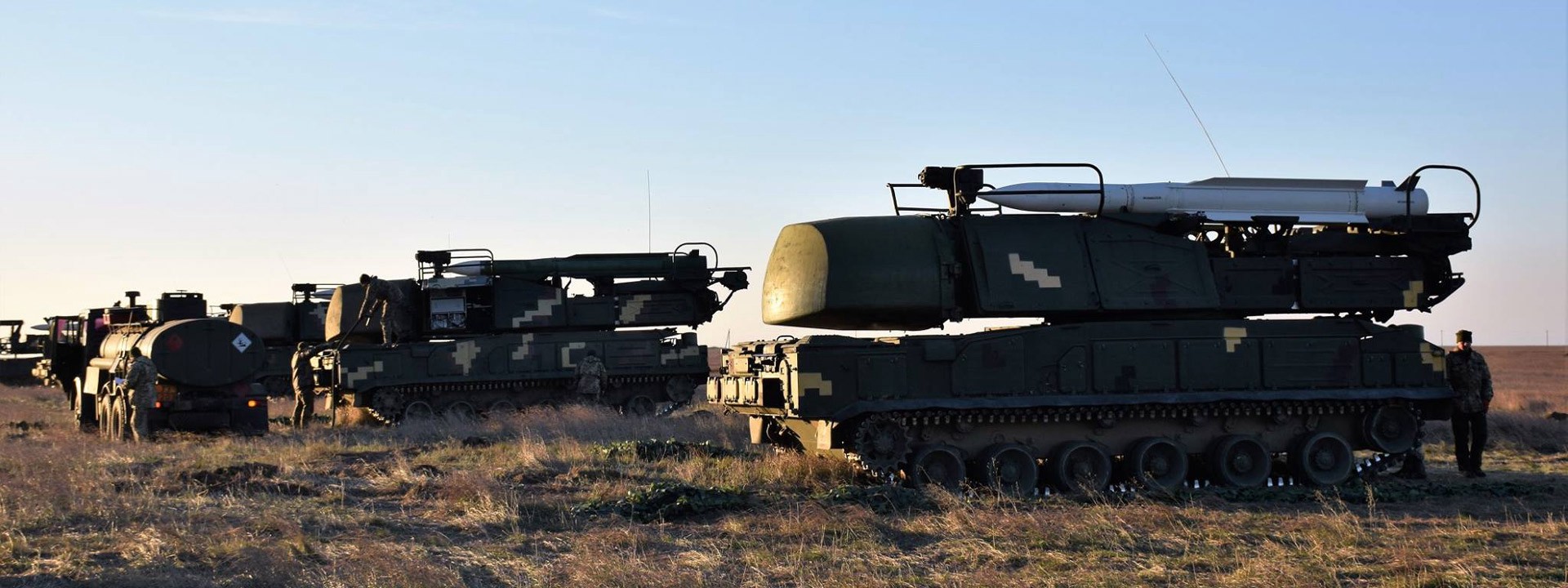Missile Misdemeanor In Crimea
Testing Ukrainian surface-to-air missiles and Russian coastal defense systems in southernUkraine
Missile Misdemeanor In Crimea

Testing Ukrainian surface-to-air missiles and Russian coastal defense systems in southern Ukraine

Russia and Ukraine separately conducted several surface-to-air missile tests in bordering regions within a two-week period. @DFRLab looked at what they tested and in and near the tenuous Crimean Peninsula.

Illegal Bal and Bastion Tests in Crimea
Recently, the Russian Ministry of Defense announced (in Russian/English) successful missile strike tests by the Russian Black Sea Fleet’s “Bal” and “Bastion” coastal defense and anti-ship missile systems as part of a planned combat training exercise in illegally occupied Crimea, Ukraine. The announcement did not specify the location, but systems were previously seen near Sevastopol.
The announcement stated that crews practiced missile strikes at “naval groupings of simulated enemy from unequipped positioning areas” and “while aviation strikes of the simulated enemy and actions by sabotage and reconnaissance groups.”

This is not the first time the systems were tested in the area, with both Bal and Bastion coastal defense missile systems previously observed in illegally occupied Crimea in and around Sevastopol since deployment, even at the Victory Day parade earlier in 2017. As reported by Russian media sources, the systems “control the territorial waters of Russia.”
https://www.youtube.com/watch?v=Ubv-8YE1QzY
3K55 “Bastion” (NATO reporting name SS-C-5 Stooge) mobile coastal defense missile systems include four launch vehicles, a command vehicle, a radar vehicle, and several maintenance and transloader vehicles. Each launch vehicle carries three 3M55 “Oniks” (NATO reporting name SS-N-26 Strobile) anti-ship cruise missiles with a range up to 300 km with hi-low flight trajectory (such as a high altitude flight) and 120 km with low-low flight trajectory (such as sea skimming).


3K60 “Bal” (NATO reporting name SS-C-6 Sennight) coastal defense missile systems are armed with Kh-35 “Uran” (NATO reporting name SS-N-25 Switchblade) subsonic anti-ship missiles. A Bal coastal defense unit typically consists of two batteries; one battery includes a command vehicle, two missile launch vehicles, and two transloaders. Each launch vehicle can carry up to eight “Uran” missiles, with a maximum range of 120 km.
As previously reported by @DFRLab, Russia’s Bal and Bastion systems are notably also in Kaliningrad to the west and Kuril Islands to the east.
While there was no multimedia released with the Russian Ministry of Defense’s announcement, testing of these systems, as well as all other Russian activity in occupied Crimea, are considered illegal, as stated by the General Staff of Armed Forces of Ukraine (UAF).
Over the Weekend…
On November 2 and 4, in Oleksandrivka, Kherson Oblast, the oblast bordering Crimea, the Air Force Command of the Ukrainian Armed Forces (UAF) conducted several anti-aircraft missile tests. The military exercises were part of the Day of Missile Forces and Artillery on November 3.
On November 2, the UAF conducted nine missile test launches at six BR-3 “Reys” (ВР-3 «Рейс») unmanned aerial vehicles (UAVs) simulating cruise missile flight paths, “in strict observance with international law,” according to the announcement.



On November 4, the UAF fired 23 missiles from 9K37 Buk-M1 (NATO reporting name SA-11 Gadfly) and S-300 (NATO reporting name SA-10 Grumble) anti-aircraft missile systems at eleven BR-3 “Reys” (ВР-3 «Рейс») UAVs and more than 20 missiles from the 9k33 “Osa” (NATO reporting name SA-8 Gecko) short-range surface-to-air missile (SAM) system.



9K33 “Osa” short-range surface-to-air missile system are regularly observed by the Organization for Security and Co-operation in Europe’s Special Monitoring Mission (OSCE SMM) to Ukraine in the Donbas. These air defense systems are a curious choice for the conflict in eastern Ukraine given their designed purpose — to shoot down aircraft or missiles. It is possible that these systems may be used against UAVs; however, given that most UAVs in eastern Ukraine are considered “mini” or medium-range, this system would be disproportionate towards those systems.
Additionally, the test of a Buk medium-range SAM is notable — as Bellingcat and @DFRLab have reported — because a Buk-M1 missile system downed flight MH17.
Conclusion
The Russian Bal and Bastion and Ukrainian anti-aircraft/SAM tests were only two weeks apart and in relatively close proximity to one another. While the Russian exercises in illegally-occupied Crimea are considered illegal, the Ukrainian exercises were reportedly done in accordance to international law and widely publicized.
@DFRLab will continue to monitor military exercises such as these.
Follow the latest Minsk II violations via the @DFRLab’s #MinskMonitor.
Also, follow @DFRLab on Twitter for more in-depth analysis from our #DigitalSherlocks.

